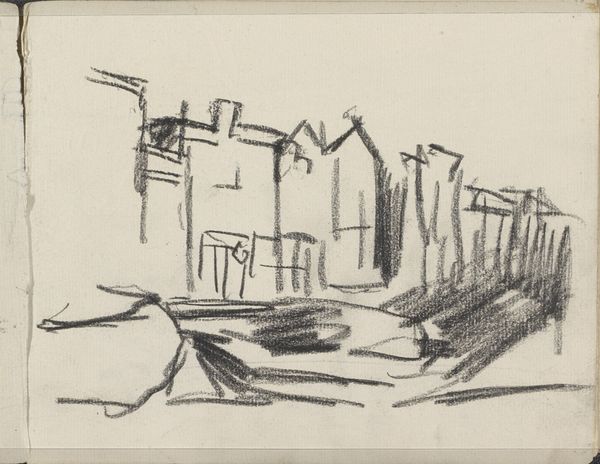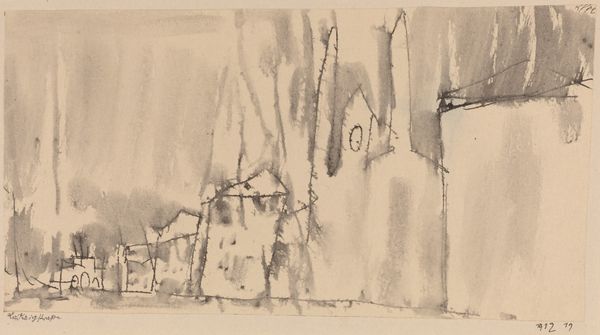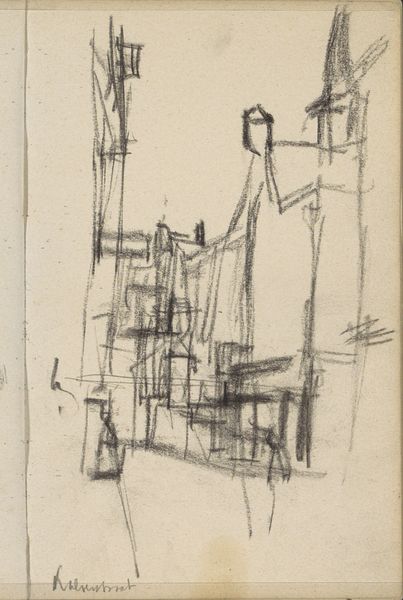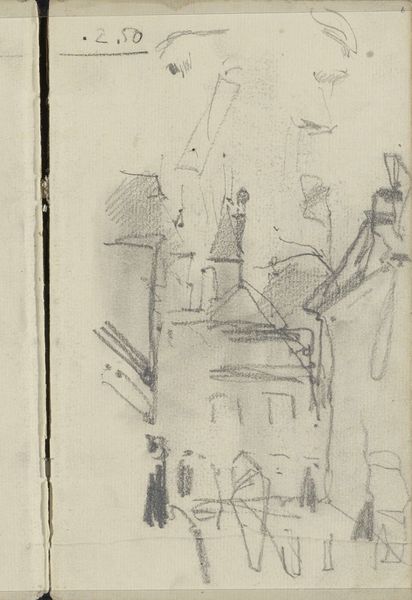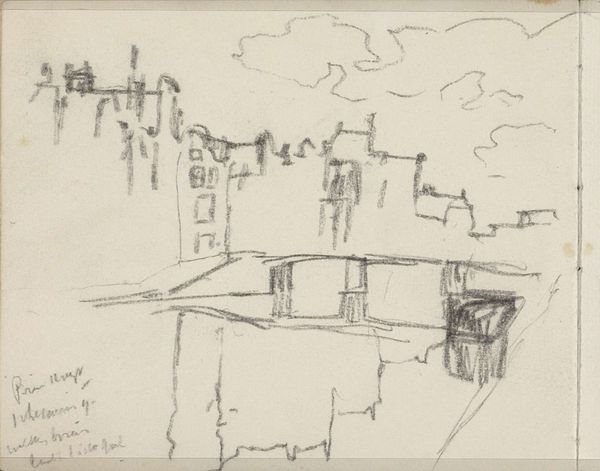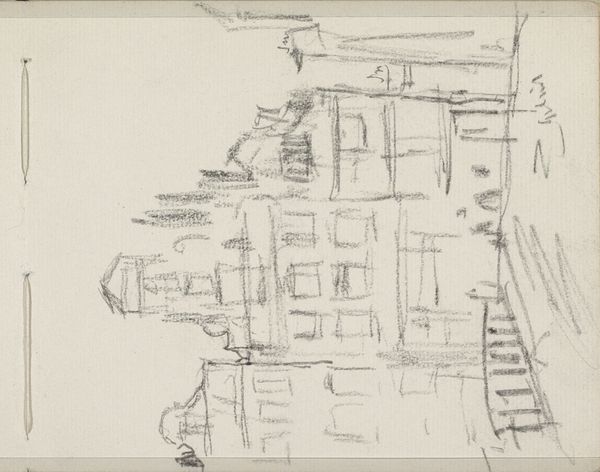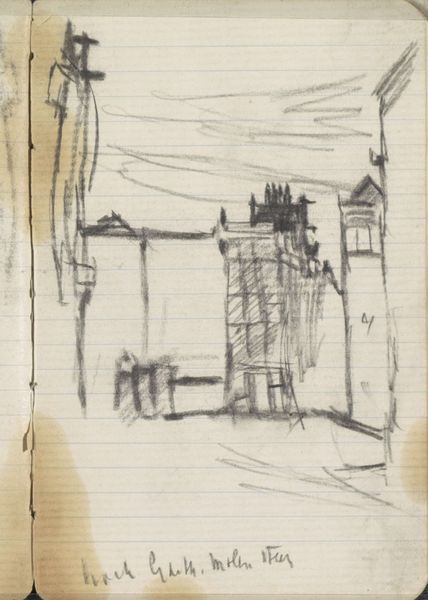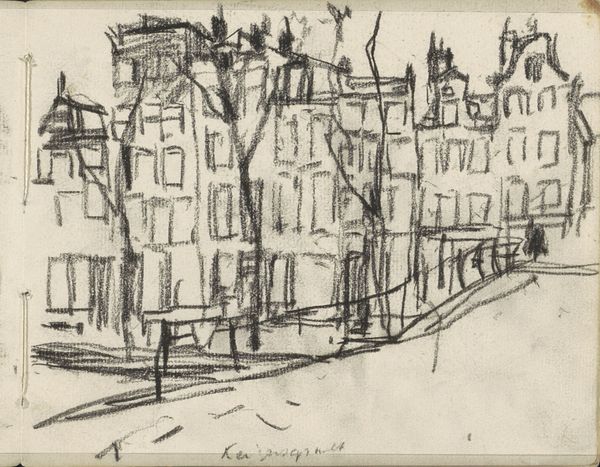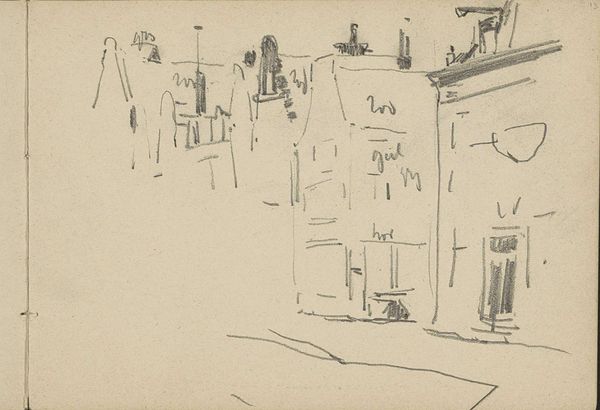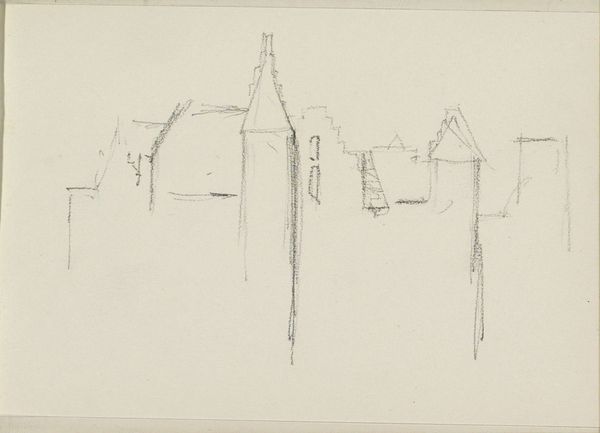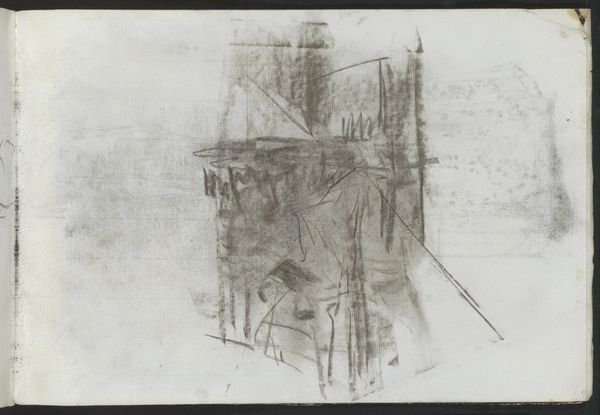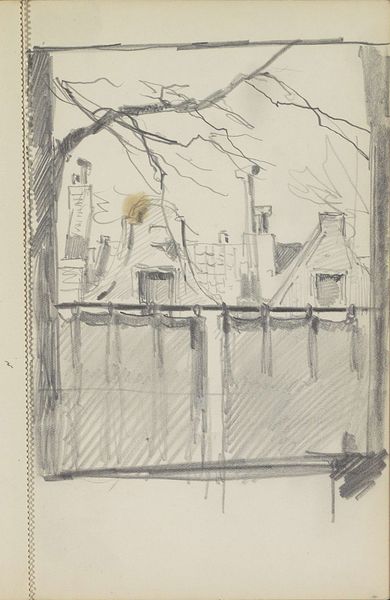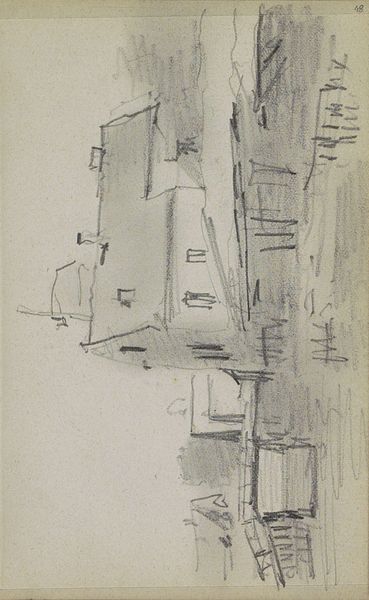
Gezicht op de Dam te Amsterdam met het Koninklijk Paleis, de Nieuwe Kerk en Naatje c. 1893s - 1903s
0:00
0:00
Copyright: Rijks Museum: Open Domain
Curator: Immediately, I’m struck by the immediacy, the artist's hand so evident in these raw lines. There's an unfinished quality, a sort of energy trapped in the graphite. Editor: Precisely. Let's introduce George Hendrik Breitner's "View of the Dam Square in Amsterdam with the Royal Palace, the New Church and Naatje," created sometime between the 1890s and early 1900s. The artwork invites us to think about how spaces of spectacle in Dutch society reflect the population’s diversity, with the Dam itself frequently operating as a site for contentious social and political action. Curator: I am interested by the almost hurried sketch quality that offers more of an impression. The graphite work really captures a mood as opposed to a detailed scene. You know? Look how Breitner captures light reflecting on architecture, the almost smoky haze of the bustling city life implied rather than rendered explicitly. Editor: Note the composition. Breitner employs a panoramic view that places the viewer at a certain distance. But his sketch still provides a feeling for that pivotal space of mercantile exchange. I would suggest, however, that, in presenting this viewpoint from afar, it also keeps those less economically powerful distant. What’s not immediately evident, or represented in most standard histories, is who controls visual access. Curator: An intriguing reading! It prompts thinking about social dynamics inherent in vantage points. Though I might add that this kind of raw medium captures the unfiltered energy of a public space like Dam Square at that time. This lack of finish is really telling of Breitner’s focus on documenting the moment. Editor: Yes, Breitner here provides an analysis on the historical tension of visual ownership of social-political gathering places that persist in Amsterdam today. What can the public actually "see"? Who curates that public image? Curator: Ultimately, whether capturing a moment or scrutinizing visual control, Breitner invites questions about perspective. Editor: And how historical inequities echo through public spaces today. This is where Breitner's sketch gains contemporary relevance, don't you think?
Comments
No comments
Be the first to comment and join the conversation on the ultimate creative platform.
